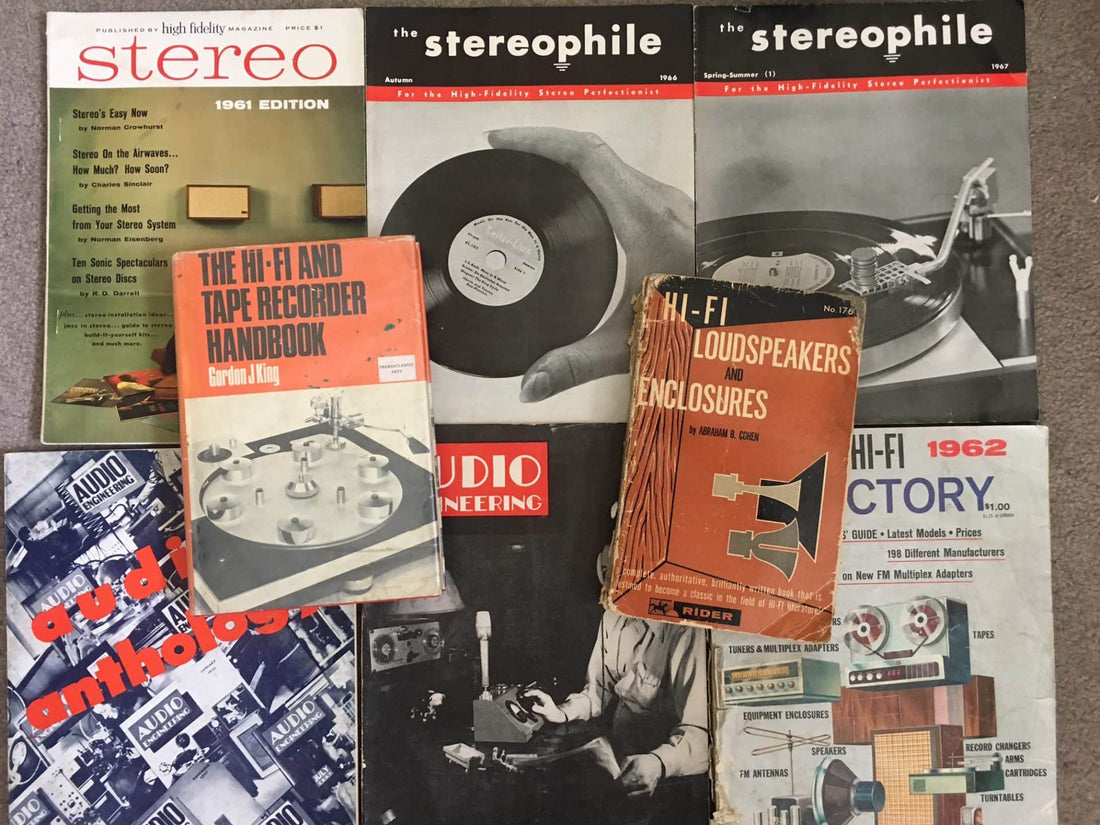Back in the ’70’s, Ron Gilbrech, then a salesman at Opus 2 in Memphis, said to me, “y’know, as much as you’ve spent on magazines, you could’ve bought a killer system by now.” (Ron’s an occasional reader—so, hey, buddy!)
Ron was right. I started subscribing to The Absolute Sound after its second issue, while I was in high school. I was late to Stereophile, but caught International Audio Review in its infancy, subscribed to AudioMart, sought out Hi-Fi News & Record Review, Stereo Sound, Gramophone,Wireless World, and a number of other foreign audio mags. It wasn’t that easy to get overseas mags in those days, but I managed—with car mags, as well.
I found and bought the classic texts. I special-ordered John Crabbe’s books. And yeah, I spent a lot of money for a young punk—all without actually assembling a stereo system. That came, finally, in bits and pieces.
I also collected brochures from stereo manufacturers, which helped me in my occasional gig as a campus rep for a number of wholesalers. Mostly, though, I was un poquito obsessed, and the more esoteric, the rarer, the better. I had handwritten letters from Julius Futterman and David Gammon. I had flyers from companies that were barely companies. I had catalogs from kindly dealers and distributors in the UK and Hong Kong (a belated thanks to The Radio People, if they still exist).
As a kid I learned there were people who collected old railroad schedules…which I thought was the craziest thing ever. I came to realize that that was a way of having something of the thing, without having the thing itself. It’s not as though most folks could stash away a locomotive—right?
I also learned that there was a fancy name for the category of collectibles that included those schedules, along with brochures, flyers, catalogs—all the stuff that was never expected to be saved. Because of the inherently ephemeral nature of such things—here today, gone tomorrow—that category is known as ephemera (ee-FEM-er-uh). A lovely name, no? Almost Biblical.
Almost biblical or no, that stuff can pile up just like that stack of broken receivers in your garage. By the time I was 18, my gruff-but-thoughtful-sometimes father bought me a 4-drawer filing cabinet, which I promptly filled with brochures, product literature, spec sheets, and catalogs.
Well—life happens, yadda yadda, and most of that stuff is gone, along with several cubic yards of audio and automotive magazines. As any now-unencumbered hoarder will tell you if they’re at least half-sane, sure, that stuff is occasionally missed. But for the most part, it’s a relief to not have three large storage rooms, an attic, and a double garage full of STUFF. Yes: I did. There’s a reason my psychiatrist sister called my house “The Bunker”.
If you actually want to collect old brochures and product lit, good luck. The stuff on eBay is generally fairly common and egregiously overpriced. In the past I often found such things at flea markets and estate sales and ham swap meets. I haven’t seen a good flea market in decades, and these days I avoid the homes of the recently-deceased. They creep me out. Ham swap meets? Do they still exist?
You’re in better luck if you’re looking for reference material—textbooks, advanced-layman books, magazines, house organs—on audio and electronics. There are riches available online that I would’ve killed for, years ago. It’s still easy to lose a day just looking through this stuff.
The Mother Lode of all things electronic, radio, and audio is American Radio History. I’ve mentioned this site before, and you’ll find many popular American audio mags of the ’40’s to the ’70’s: Audio(Engineering) from 1947-70. High Fidelity, 1951-70. The extremely hard to find DIY mag Audiocraft, 1955-58. All manner of radio, electronics, and broadcasting mags. Reference texts. The Bell Laboratories Record. Wireless World. Billboard.
Just go look.
If you can go to this site and not lose at least three hours, you’re stronger-willed than I am.
I’ll dig up some more places for vintage audio enthusiasts to go, and maybe find more vintage catalogs and brochures in the process.
Happy reading—and there’s no pesky musty smell!
(A final note: I know the stuff shown in the pic falls more under the heading of “bibliophilia” than “ephemera”. I don’t have any cool old brochures or spec sheets on hand at the moment. Oh, well.)




